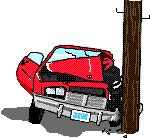Buy and Hold
Updated 06/17/14
Keep your eyes on the road
Traveling to your investment goals is much like driving your car. While you can hold the steering in a fixed position for a short period, eventually, you need to adjust. You must refine your investment steering regularly or your journey will likely end poorly.
FastTrack is a road map that tells you where your investments have been in the past with the historical charts. While FastTrack does not see into the future, it does help you assess current conditions. FastTrack shows there are many roads to investment success. You choose the path, speed, and the risks you take in traveling the route.
 Many Investors DO NOT know the Current Situation
Many Investors DO NOT know the Current Situation
When reading a current magazine article, you never know if those great ideas are ancient history, happening now, still in the future, or just plain wrong. Use FastTrack for perspective. What are the salient characteristics that have the author so enthused. Many articles are written by fresh-out-of-college English majors. They steer you in the wrong direction because they've never been there themselves.
This italicized comment is written in mid2014. Morningstar has changed their ranking system several times. So take this lesson as a simple training exercise, and redo the analysis yourself. The techniques still work quite well.
As of 1999
There are many published fund ranking systems. Magazines are filled with them. Most prominent is the Morningstar ranking system of 1-5 stars. What you should know is that this system doesn't work. This is no surprise since Morningstar themselves disclaim its predictive power . . . while encouraging funds to advertise their Morningstar ratings (and their Morningstar name).
-
Red line: The Average Morningstar 5-Star fund as of July 1994.
-
Green Line: The AVG of Growth funds that have existed since 7/1/94. (The green line is virtually invisible hidden under the yellow line.
-
Yellow line: The unmanaged Average of all GROWTH funds in the FastTrack database.
What Doesn't Work
What you'll notice is that Morningstar top-ranked funds under perform while having a high correlation (Cor=98%) to the average Growth fund. Every Morningstar ranking repeats this pattern until December 1997, at which point, Morningstar dramatically changed their ranking system. (More on the change a couple of paragraphs down).
The Lower R chart (Relative Strength) shows:
- Pre-publication: The red 5-Star fund line hugely outperformed the Growth Average. The lines of the R chart go up indicating the red line of the T Chart is outperforming the green line.
- After publication: The red 5-Star Average is weaker than the Growth Average. The red line underperforms the green line by 14% total return since June 30, 1994.
If you were to hold 5 to 10 growth funds at random, you would expect to beat the Morningstar averages. BUT if you were to pick only one or two funds, then selecting from the Morningstar suggestions would reduce risk ensuring that you would not be picking one of the few funds that are poorly managed.
Unfair! The Growth AVG no longer includes the real DOG funds that have been liquidated or merged!
While this is true, the Morningstar 1994 family has the same advantage. It's real losers have met a similar fate. It is unlikely that "discontinued" funds are a factor.
Foretelling the future?
This is an imprecise science, but there are rules:
- At broad market-turning points, some issues will move more than others. Simple rankings can help pick the best investments.
- Sectors move differently from the broad market. AccuTrack can be used to trade between sectors especially using sector funds. The Momentum Model uses the same ranking techniques trading among many funds.
- Mutual funds trend better than stocks. If you like the technical indicator approach to investing, then you will find funds easier to analyze than stocks.
- Over the long term, if you are going to be a passive investor, owning a growth mutual fund will provide better returns than owning 3-10 stocks unless you are pretty lucky in your stock selection. Note A third of all stock investors holding 3-5 stocks over the long term will beat the market by sheer luck, therefore, you will hear many success stories favoring stocks over funds. The majority of investors will not beat the broad market.